The March to The Rhine |
|
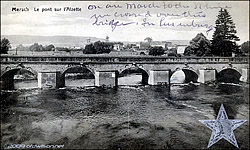 |
The 2nd Engineers spent the night of November 22, 1918 at Reckange, Luxemburg. The following day they marched through Mersch crossing this bridge which no longer exists.
|
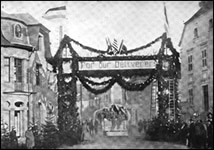 |
THE AMERICANS ON THE MARCH TO THE RHINE
Before the ladders could be taken down from the arch of welcome erected in Mersch, Luxembourg, to greet the American army on the march to the Rhine, troops of the 2nd Division were pouring through the city in motor trucks, and the work of building and decorating the arch had to be completed while the Americans were actually marching beneath it. |
 |
Decorator's Arch welcoming Americans to Mersch, Luxembourg.
Taken November 30, 1918.
Photographer Sgt. Hanlin, S.C. |
|
 |
Welcome arch erected in Mersch, Luxembourg by the civil population for the American Army of Occupation marching through into Germany.
Taken December 3, 1918. The 2nd Division had left Mersch and the surrounding towns and crossed the Sure River into Germany on December 1.
|
|
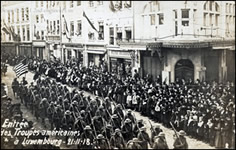 |
This image might be the 1st Division. I have no reason to believe that any element of the 2nd Division passed through the city of Luxembourg. Comments are welcome. |
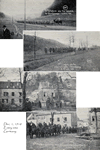 |
Entry of the 2nd Engineers into Germany on December 1, 1918 through Luxembourg. |
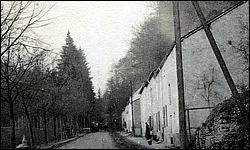 |
Larochette, Luxemburg [sic Luxembourg] December 1, 1918
Photo by 2nd Engineers |
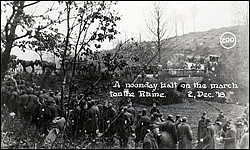 |
Part of the Armistice terms was that troops would not cross the German frontier until Dec. 1, 1918. The 2nd Engineers were at Larochette, Luxembourg on Dec. 1. They crossed the Sauer River into Germany at Wallendorf. What a job that must have been. Along with 27,000 men went the artillery, wagons, vehicles, supplies and approximately 7,000 horses. My grandfather wrote: "Later we started walking thru Belgium to Germany on Rhine. We were 17 days walking in rain & mud. Sleep on wet ground of night. We were wet all time. Very little to eat on march to Rhine."
This photograph was taken between Geichlingen and Oberweiler, Germany. Google
Map |
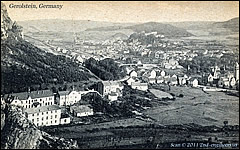 |
Gerolstein, Germany |
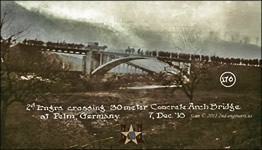 |
At Pelm, Germany December 7, 1918 |
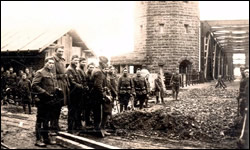 |
From Dec. 10th to the 13th, the regiment lived in Remagen-on-the-Rhine, and on the 14th, crossed the Rhine on the large steel bridge at Remagen, which was built by Allied Prisoners of War. |
|
| |
| |
|
| |
| |
|

